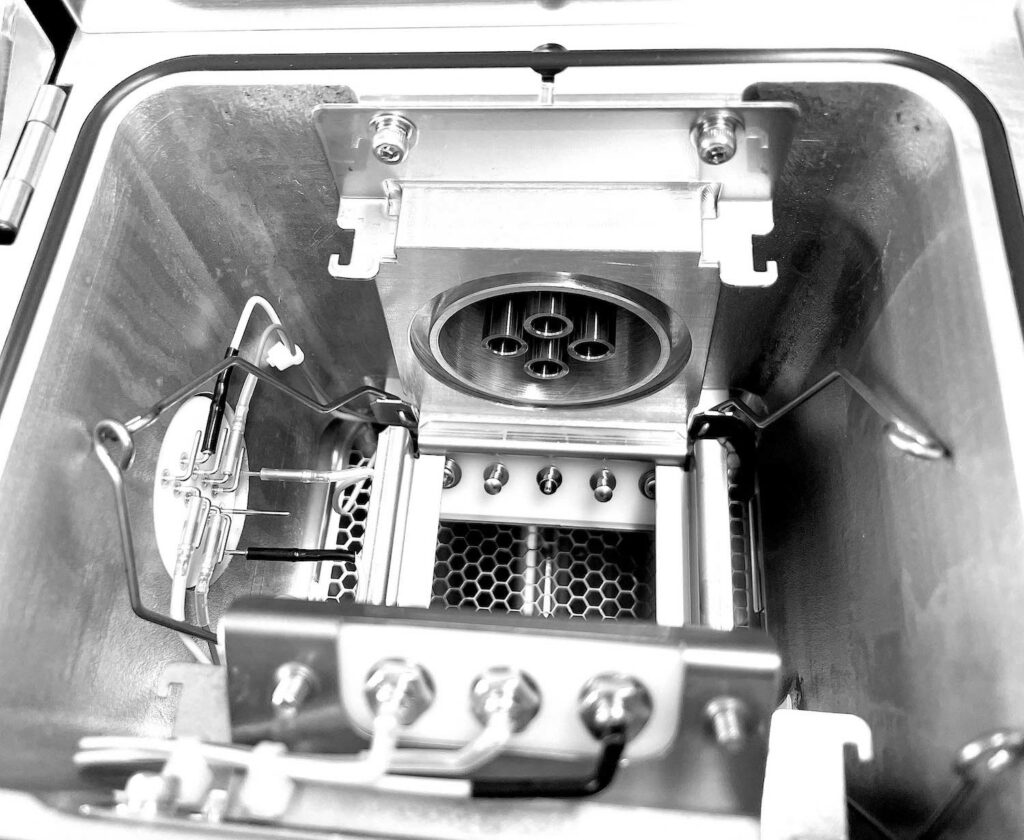Analytical technique for particle separation and determination by combining liquid chromatography with mass spectrometry (LC MSxMS). The principle of operation of the “triple quadrupole” detector used in the LC is the same as in the GC – the detector itself differs in size and ionization method, but the design is very similar.
After leaving the chromatographic column, the analytes go to a tandem mass spectrometer (MS / MS), commonly known as a triple quadrupole, which consists of two scanning mass analyzers (quadrupoles) separated by a collision chamber. The fragments selected in the first quadrupole are reacted with an inert gas in the collision chamber, resulting in further fragmentation.
During the development of the analytical method, the analyst selects the ions with the highest intensity, thus defining the so-called MRMs.
, The device operating in the “MRM” mode is extremely sensitive and the interference from the matrix is minimal.
The most important disadvantages include: high price, lack of libraries enabling automatic identification of compounds, the need to have standards for each of the analyzed substances.
Application:
It is one of the key devices in our laboratory. It can analyze almost all organic compounds at concentrations well below 1 ppm.

